
Filter News
Area of Research
- (-) Energy Science (43)
- (-) Materials (105)
- Advanced Manufacturing (4)
- Biology and Environment (17)
- Computational Biology (1)
- Computer Science (1)
- Fusion and Fission (6)
- Isotope Development and Production (1)
- Isotopes (27)
- Materials for Computing (15)
- National Security (23)
- Neutron Science (122)
- Nuclear Science and Technology (15)
- Quantum information Science (4)
- Supercomputing (40)
News Topics
- (-) Cybersecurity (10)
- (-) Isotopes (13)
- (-) Microscopy (29)
- (-) Neutron Science (42)
- (-) Physics (28)
- (-) Polymers (21)
- (-) Space Exploration (5)
- 3-D Printing/Advanced Manufacturing (90)
- Advanced Reactors (9)
- Artificial Intelligence (13)
- Big Data (7)
- Bioenergy (30)
- Biology (12)
- Biomedical (10)
- Biotechnology (4)
- Buildings (38)
- Chemical Sciences (33)
- Clean Water (10)
- Composites (19)
- Computer Science (36)
- Coronavirus (14)
- Critical Materials (19)
- Energy Storage (85)
- Environment (64)
- Exascale Computing (3)
- Fossil Energy (2)
- Frontier (3)
- Fusion (7)
- Grid (40)
- High-Performance Computing (9)
- Hydropower (3)
- Irradiation (1)
- ITER (1)
- Machine Learning (10)
- Materials (94)
- Materials Science (90)
- Mathematics (3)
- Mercury (3)
- Microelectronics (1)
- Molten Salt (3)
- Nanotechnology (41)
- National Security (6)
- Nuclear Energy (22)
- Partnerships (16)
- Quantum Computing (3)
- Quantum Science (12)
- Security (7)
- Simulation (4)
- Statistics (1)
- Summit (6)
- Transportation (70)
Media Contacts

Researchers have pioneered a new technique using pressure to manipulate magnetism in thin film materials used to enhance performance in electronic devices.

Scientists have discovered a way to alter heat transport in thermoelectric materials, a finding that may ultimately improve energy efficiency as the materials

OAK RIDGE, Tenn., March 22, 2019 – Karren Leslie More, a researcher at the Department of Energy’s Oak Ridge National Laboratory, has been elected fellow of the Microscopy Society of America (MSA) professional organization.
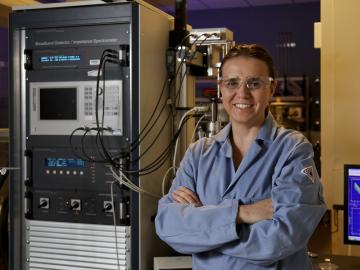
Vera Bocharova at the Department of Energy’s Oak Ridge National Laboratory investigates the structure and dynamics of soft materials.
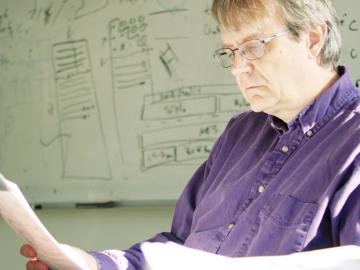
More than 1800 years ago, Chinese astronomers puzzled over the sudden appearance of a bright “guest star” in the sky, unaware that they were witnessing the cosmic forge of a supernova, an event repeated countless times scattered across the universe.
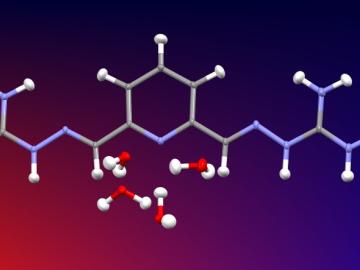
Researchers used neutron scattering at Oak Ridge National Laboratory’s Spallation Neutron Source to investigate the effectiveness of a novel crystallization method to capture carbon dioxide directly from the air.
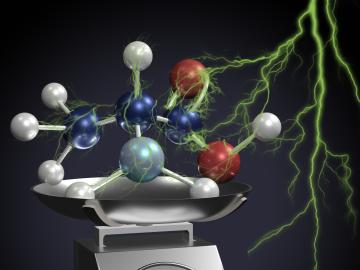
OAK RIDGE, Tenn., Jan. 31, 2019—A new electron microscopy technique that detects the subtle changes in the weight of proteins at the nanoscale—while keeping the sample intact—could open a new pathway for deeper, more comprehensive studies of the basic building blocks of life.
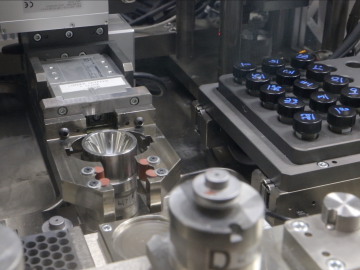
By automating the production of neptunium oxide-aluminum pellets, Oak Ridge National Laboratory scientists have eliminated a key bottleneck when producing plutonium-238 used by NASA to fuel deep space exploration.

Oak Ridge National Laboratory scientists studying fuel cells as a potential alternative to internal combustion engines used sophisticated electron microscopy to investigate the benefits of replacing high-cost platinum with a lower cost, carbon-nitrogen-manganese-based catalyst.

A team of scientists has for the first time measured the elusive weak interaction between protons and neutrons in the nucleus of an atom. They had chosen the simplest nucleus consisting of one neutron and one proton for the study.


